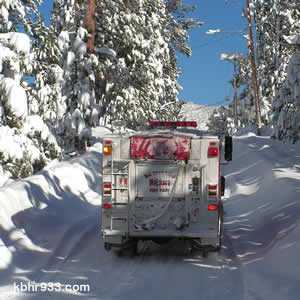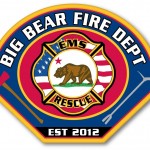

Big Bear Lake, CA – Carbon monoxide, a colorless and odorless toxic gas, is produced when fuels such as wood, natural gas, propane and gasoline burn incompletely. Heating and cooking equipment are potential sources of carbon monoxide, as well as vehicles and generators operating in enclosed spaces.
Just this week, members of the Big Bear Lake Fire Protection District responded to a carbon monoxide incident at a business in the City of Big Bear Lake. The business was evacuated while emergency personnel searched for the source of the carbon monoxide gas. With the assistance of Southwest Gas, a faulty water heater was found to be the cause of the problem. Emergency personnel provided on-scene medical care to one employee who reported feeling ill.
Shortness of breath, nausea, dizziness and headaches are all common signs of carbon monoxide poisoning. Big Bear Valley residents and visitors are reminded to be aware of these symptoms which can be mistaken for the flu or food poisoning. In extreme cases, carbon monoxide poisoning can lead to death. A few precautionary measures can save lives:
Inside the home
— Install carbon monoxide (CO) alarms inside the home to provide early warning of accumulating CO. CO alarms should be installed in a central location outside each separate sleeping area and on each level of the home.
— Test CO alarms at least once a month and replace CO alarms according to the manufacturer’s instructions.
— CO alarms are not substitutes for smoke alarms Know the difference between the sound of smoke alarms and CO alarms.
— Have fuel-burning heating equipment (fireplaces, furnaces, water heaters, wood-burning stoves, etc.) and chimneys inspected by a professional every year, preferably before cold weather sets in.
— When using a fireplace, open the flue for adequate ventilation.
— Never use the oven to heat your home.
Outside the home
— When warming a vehicle, remove it from the garage immediately after starting it. Do not run a vehicle, generator, or other fueled engine or motor indoors, even if garage doors are open. Make sure the exhaust pipe of a running vehicle is not covered with snow.
— Generators should be operated in well ventilated locations outside away from all door window and vent openings.
— During and after a snowstorm, make sure vents for the dryer, furnace, stove, and fireplace are clear of snow build-up.
— Only use barbecue grills, which can produce CO, outside. Never use them inside the home, garage, or near building openings.
If your CO alarm sounds
— Immediately move to a fresh air location outdoors or by an open window or door. Call for help from a fresh air location. Remain at a fresh air location until emergency personnel arrive to assist you.
— If the audible trouble signal sounds, check for low batteries or other trouble indicators.
To gain additional information about carbon monoxide poisoning prevention, visit nfpa.org or call your local fire department: Big Bear City Fire Department, 909/585-2362; Big Bear Lake Fire Protection District, 909/866-7566, ext. 4; San Bernardino County Fire Department, Fawnskin, 909/866-4878; and San Bernardino County Fire Department, Baldwin Lake, 909/584-9911.



